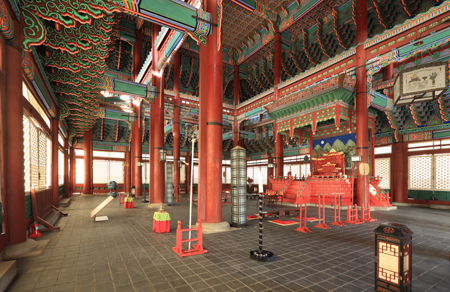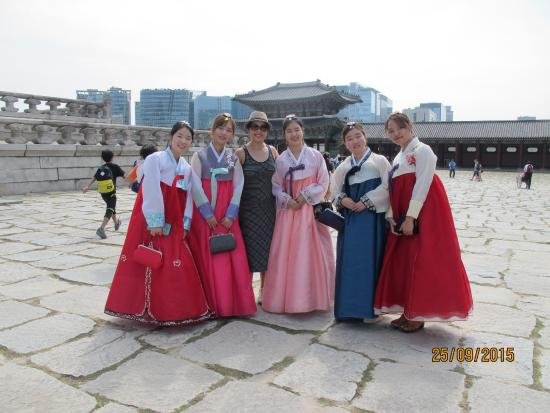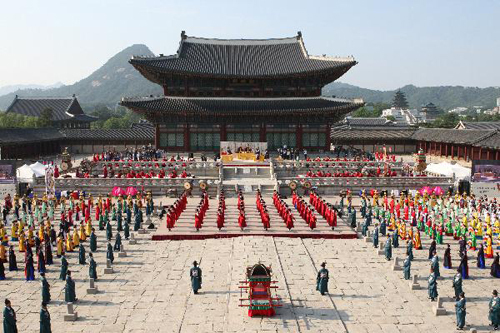.jpg)
Gyeongbokgung Palace, where the rulers of the Joseon Kingdom (1932-1910) lived and regulated state issues, is without a doubt the most imperative recorded fascination for guests to Korea.

Gyeongbokgung Palace is ensured by a 2,404 meter long divider that is likewise five meters tall and two meters thick. There are four doors set into the dividers Geonchunmun toward the east, Gwanghwamun toward the south, Yeongchumun toward the west and Sinmumun toward the north each symbolizing spring and wood, summer and fire, harvest time and metal and winter and water, separately. This begins from the yin and yang idea and the hypothesis of the five components.
.jpg)
five hundred years, Gyeongbokgung Palace filled in as the fundamental castle and was the focal point of energy, governmental issues, the economy and culture. Above all, it was the image of national sway.

Gyeongbokgung Palace experienced a few changes, the principal following the Japanese intrusion of 1592. An article dated April 30, 1592, from the Annals of the Joseon Dynasty states tells that the "capital was set ablaze," by the irritated individuals when the ruler (in those days King Sunjo) fled toward the North, leaving Gyeongbokgung and country presented to threat. The scene was left forsaken for a long time until Prince Regent Heungseon Daewongun modified it in 1867. Tragically, it was crushed again amid the Japanese occupation (1910-1945) and responsibility for royal residence exchanged to the Japanese Government-General. Reclamation of Gyeongbokgung Palace has been continuous since 1990.

This is @huda don't forget to resteem and upvote.
This post recieved an upvote from minnowpond. If you would like to recieve upvotes from minnowpond on all your posts, simply FOLLOW @minnowpond
Downvoting a post can decrease pending rewards and make it less visible. Common reasons:
Submit
Upvoted you
Downvoting a post can decrease pending rewards and make it less visible. Common reasons:
Submit